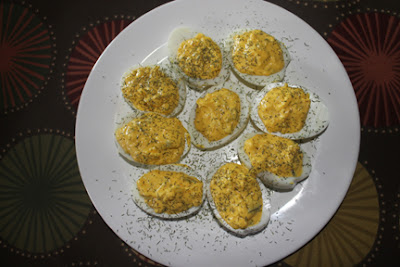 |
| Casserole 101 |
The definition of a casserole is "flexibility". It is a one pan meal cooked in the oven, usually with a brown and crusty top, and may consist of (part 1) rice/grain, potatoes, or noodles, combined with (part 2) vegetables, (part 3) meat or beans, and (part 4) some type of sauce. Measurements in a casserole may be approximations. For example, you've got 2 cups of cooked rice or 2 1/2 cups, throw it in, as long as the ingredients are somewhat proportional there is no exact science. I'm going to give you a "flexible" recipe to experiment with. Let me know how it goes for you and what you did to make it your own. By the way, if you aren't feeling inventive, it's ok if you just follow what I did because it was delicious!
Casserole 101
Part 1:
For my casserole I used rice. I was in a bit of a hurry so I used jasmine rice, but I could have used quinoa, or brown rice, or any cooked grain.
I cooked 1 cup of rice in 1 3/4 cup of water and put that as the base in my oil sprayed dish.
Part 2:
We love brussel sprouts and I had picked up a large bag from the co-op for the holidays. I cleaned and boiled them until they were still bright green, but almost done. I could have used lightly steamed broccoli, or chopped and sauteed kale, and I could have added sauteed onion to any of these.
Part 3:
OPTIONAL for vegetarians or those who don't want meat, use your favorite protein - be it beans or tofu and it's perfectly ok to skip the meat layer in any casserole. I had a little left over ham so I diced that up for my meat layer. It ended up being about a cup of diced ham. This could have been chicken, beans, ground beef, prosciutto, or none of these.
Part 4:
The sauce. I chose to make a simple white sauce. Place 4 tablespoons of butter and 3 tablespoons of flour in a skillet stirring constantly over low heat to make a roux.
 |
| Making the roux. |
For a white sauce, you do not want to brown the roux. When it's bubbly as shown in the picture, add 2 cups of milk all at once while stirring until it comes back to a boil and has thickened to a nice consistency.
Add salt and pepper to taste 1/2-1 teaspoon of salt and a dozen grinds of fresh black pepper. Herbs make a nice addition to the sauce as well.
 |
| Putting it all together. |
After you have layered up part 1-2-3, pour your sauce evenly over the dish.
Regarding the sauce, once you have created that, you could add grated Cheddar, Parmesan, or Asiago to the sauce and allow that to melt before pouring. This would combine well with a pasta layer to make a layered mac and cheese type casserole.
I wanted a lighter flavor for this version, so added a sprinkling of Asiago cheese mixed with a tablespoon of bread crumbs to the top of the casserole for a crusty-cheesy-browned top.
Everything in the casserole is cooked so the baking time is just to heat it through and bring everything together. Bake the casserole in a 375 degree oven for 30 - 45 minutes or until the top is browned and bubbly. If you've made it ahead and had it refrigerated, it might take a little longer to heat through. Allow 60 minutes. Let the casserole cool slightly before serving big squares.
It came out just as tasty as it looks. Served with a little spinach side salad, it made an impressive and delicious dinner.
I turned leftover ham and brussel sprouts into an entirely new dinner dish. I could have reheated them and thrown them on a plate with the rice, but this was so much more appetizing and it made that little bit of ham stretch into 4 meals and no one felt slighted.
Here's a couple of ideas for different versions you might want to try for Casserole 101:
Mexican - rice - well drained, diced tomatoes - taco seasoned ground beef and/or black beans - top with a sauce to which has been added a cup of grated cheddar or a Mexican cheese mix - finally top with tortilla chip crumbs.
Broccoli/Cheddar - pasta of your choice, spirals or elbows work well - top with a layer of beans (can be white, red, or black) - lightly steamed broccoli - cheddar cheese sauce, made by adding a cup of grated cheddar cheese to the white sauce - top with bread crumbs.
Quinoa/Kale - quinoa - saute 1 bunch of kale, 1 sweet onion, 2-3 cups chopped green cabbage - optional meat layer of ham or Italian sausage - simple white sauce with 1 tsp dried basil added when it is finished - top with 1/2 cup Parmesan cheese mixed with 1/2 teaspoon Italian herbs and 2 tablespoons of fresh bread crumbs.
Please feel free to share your 4 part combinations to inspire everyone.
Enjoy!











































